Recently, one of our customers approached us to migrate their ecommerce web hosting stack from their on-prem OpenStack infrastructure to Akamai Cloud. Although this customer appreciated OpenStack’s flexibility, there were a few challenges they faced with OpenStack that led them to Akamai.
The Challenges of OpenStack
There are three leading challenges with OpenStack. First, there’s the complexity and expertise requirements. Building and maintaining an OpenStack environment is complex, requiring deep expertise in areas such as cloud computing, virtualization, Linux systems administration, and networking. OpenStack’s modular architecture, comprising over 30 integrated services (e.g., Nova for compute, Neutron for networking, Cinder for block storage), calls for precise configuration and ongoing maintenance. Mismanagement of these components can lead to systemic failures, increasing the risk of downtime and data loss.
The second challenge of OpenStack is the limited support. While OpenStack benefits from a vibrant open-source community, it lacks the comprehensive, vendor-backed support found in enterprise cloud solutions. This can complicate troubleshooting and delay critical updates or patches, introducing operational risk. The absence of SLA-backed support services makes it difficult for organizations to ensure the reliability and security of their cloud environments.
Lastly, the hardware and operational costs of building and maintaining an on-prem environment can become burdensome. Deploying OpenStack on-prem involves significant capital expenditure on enterprise-grade hardware, including high-performance servers, network switches, and storage arrays. The customer’s initial setup costs included redundant power supplies, high-availability configurations, and other failover mechanisms. Additionally, the cost of specialized training and certification for OpenStack operators can be substantial, further escalating the overall cost of ownership.
Given these challenges, this customer decided to migrate their OpenStack environment to Linode to leverage its managed cloud infrastructure and support services.
Migrating to Linode
This customer’s objective was to transition from a resource-intensive on-prem OpenStack environment to Linode’s cloud platform, offloading infrastructure management to Linode while preserving the architecture’s existing functionality and performance.
Their current on-prem infrastructure was made up of many different components: compute, networking, storage, identity, a dashboard, images, and orchestration. Our team carefully analyzed each element to understand its function and requirements. This allowed us to find precise 1:1 solutions for every component, ensuring that the new infrastructure could support each part of the customer’s existing stack.
Our thorough testing and migration process ensured that each part of the provider’s OpenStack build was accurately matched to a corresponding product, maintaining functionality and performance. If there was no direct corresponding Linode service, we added an open-source component. In this way, we ensured that no aspect of the customer’s infrastructure was overlooked. This meticulous process not only minimized potential downtime and compatibility issues but also optimized the new environment for enhanced performance and scalability, ultimately providing a robust and reliable solution tailored to the customer’s needs.
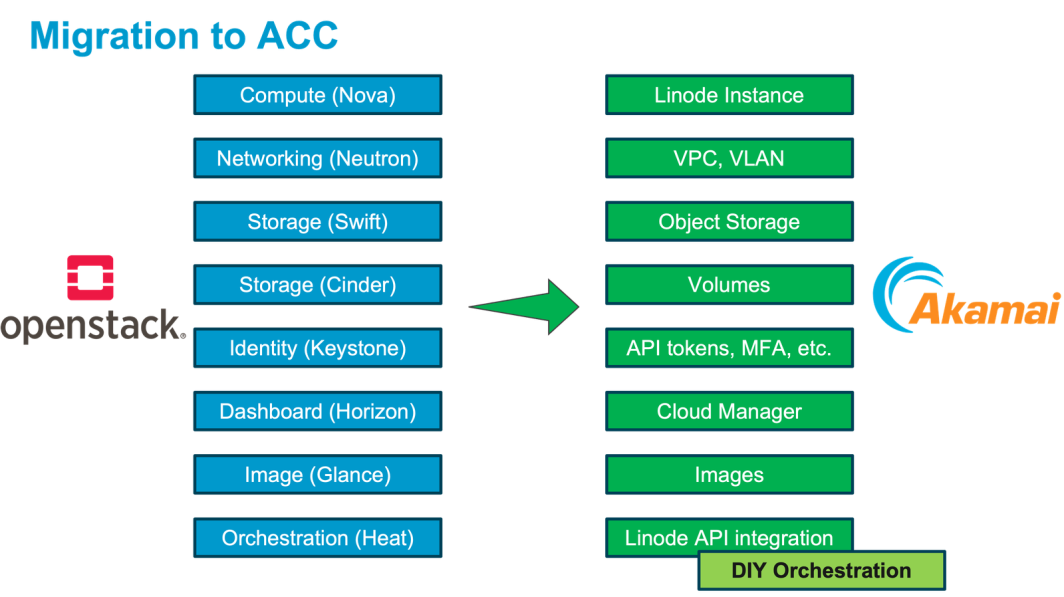
In the image above, you can see the 1:1 migration that we implemented. The customer’s previous stack included compute (Nova), networking (Neutron), block storage (Cinder), object storage (Swift), identity services (Keystone), a dashboard (Horizon), and orchestration (Heat).
The customer’s existing Nova instances were mapped to Linode Compute Instances. We utilized Linode’s high-memory and dedicated CPU instance types to meet the performance requirements of the e-commerce applications.
For Networking, we used Linode’s VLANs to create isolated networks for different application tiers (web, application, database). Linode NodeBalancers replaced OpenStack’s Load Balancer-as-a-Service (LBaaS) to distribute traffic across multiple instances.
Next, for storage, the customer was using both block storage and object storage. Linode Block Storage was utilized as a direct replacement for OpenStack Cinder, with volumes dynamically attached to instances. Storage volumes were resized and encrypted as needed to comply with data protection standards. Akamai Object Storage service replaced OpenStack Swift, allowing a smooth integration with the customer’s existing data workflows and backup solutions.
For identity and access management, we used Linode API tokens and set up Multi-Factor Authentication.
This 1:1 resource matching ensured an easy transition, allowing the customer to maintain operational continuity while benefiting from the enhanced capabilities of the Akamai Cloud.
Now, let’s take a look at how we built this.
First, we set up a DIY orchestration system using Linode’s Cloud Manager.
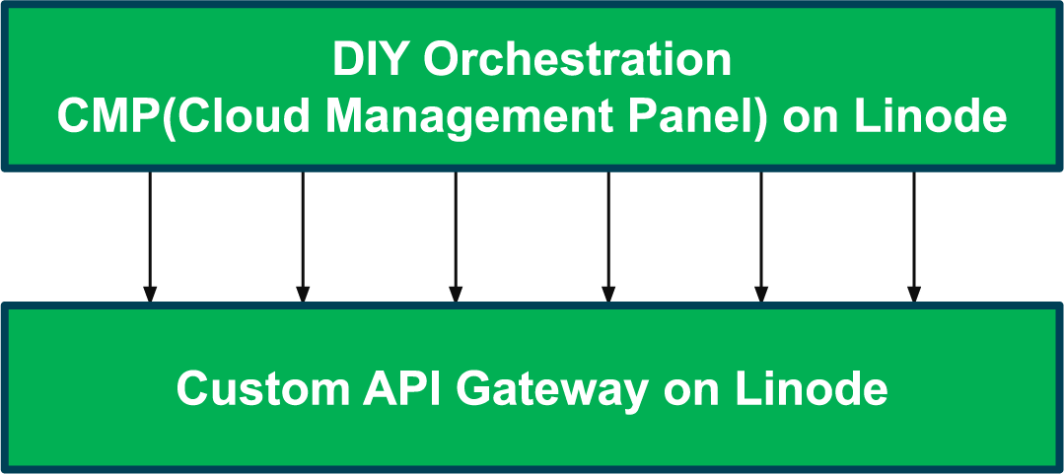
Then, we created a custom API Gateway on Linode to manage and route requests. This gateway interfaces with the Linode API.
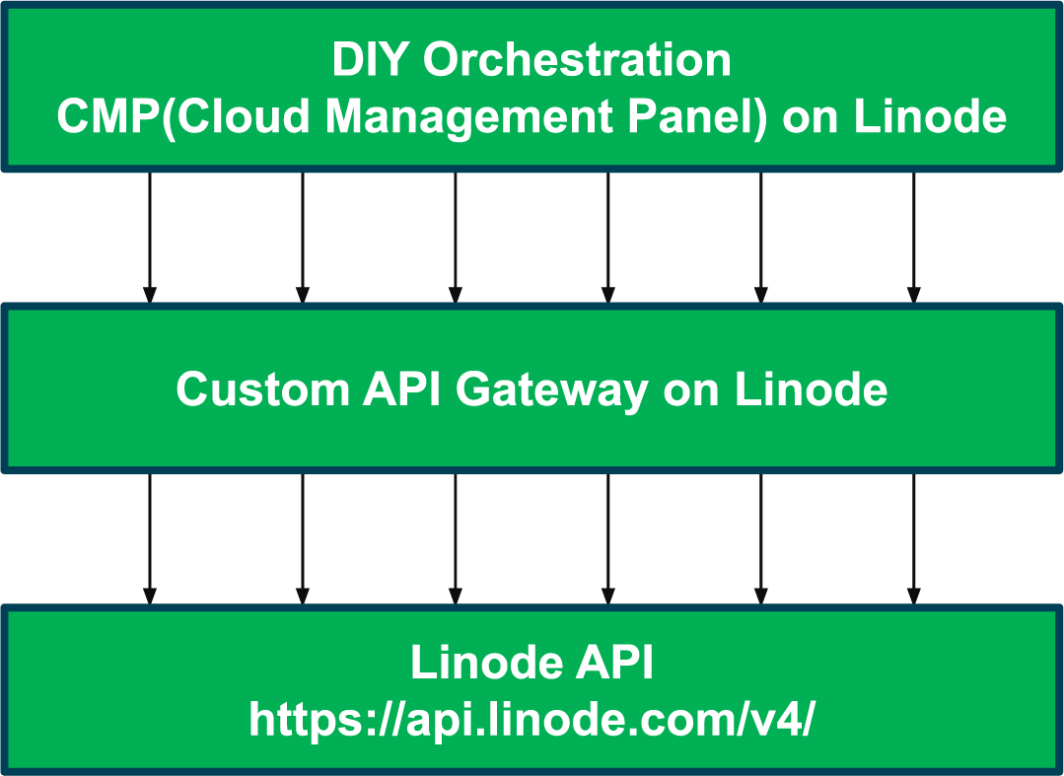
The customer then used the Linode API to create and manage provisioning pools, including Linode instances, object storage buckets, and networking resources. Additionally, custom images for deployments were created and deployed to the provisioning pools as needed.
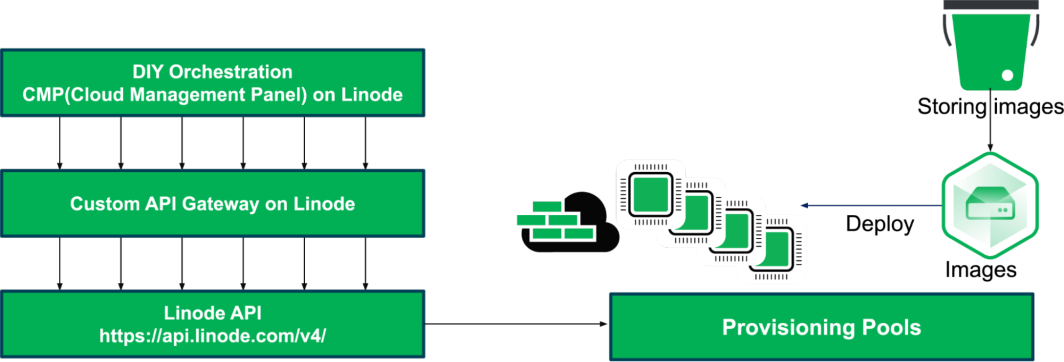
We also set up a monitoring system that performed regular health checks on the deployed resources. Then, we created a custom portal for the customer to interact with the system.
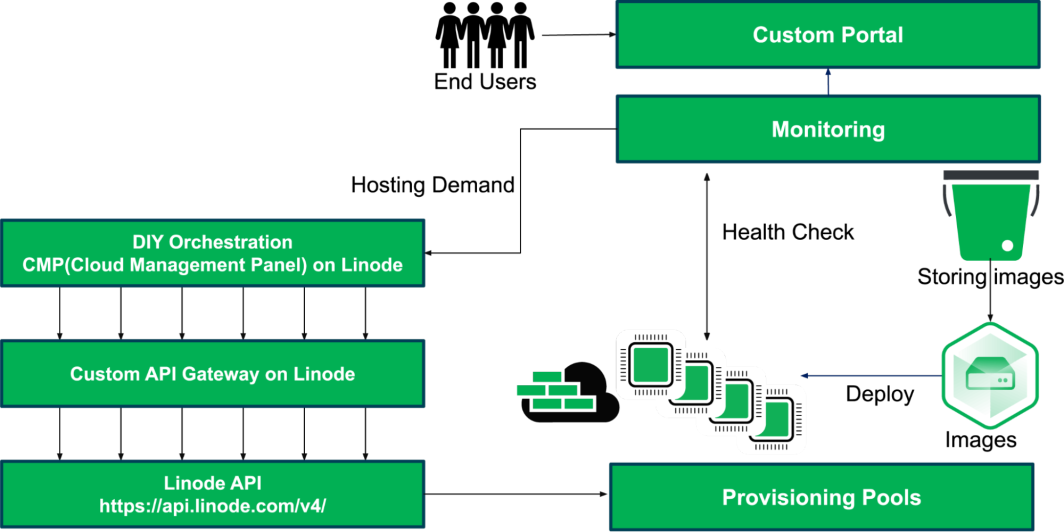
This migration strategy that we architected established a sophisticated, scalable infrastructure managed through custom tools and automation. This cloud infrastructure dynamically responds to hosting demands by provisioning resources as needed, ensuring efficient resource allocation and scalability. The API Gateway acts as a central hub, intelligently routing requests between the orchestration system, the Linode API (https://api.linode.com/v4/), and other infrastructure elements. This streamlines communication and allows for granular control over API access and functionality.
The Benefits of Migrating your e-Commerce Stack to Linode
By finding a direct 1:1 Linode replacement for each component of the customer’s existing stack, we helped them avoid a substantial increase in their data center operation costs. By migrating to Linode, they eliminated the overhead and training associated with building on OpenStack. Additionally, Linode’s predictable pricing model and efficient resource management further reduced their data center operation costs, allowing them to optimize performance without overspending.
Linode also offers comprehensive free support. This support includes 24/7 access to a team of experts who can assist with everything from initial setup to ongoing maintenance and troubleshooting. Whether you’re a small business, a developer, or a larger enterprise, having reliable support ensures that any issues are promptly addressed, minimizing downtime and disruptions. This was a huge benefit to this customer who migrated to Linode, as they were not getting comprehensive support from OpenStack.
Because the customer was coming from an on-prem infrastructure, they were able to eliminate the substantial hardware costs when they migrated to cloud infrastructure on Linode. In their previous on-premises environment, heavy traffic from end-users across the globe was leading to high bandwidth usage. This heavy traffic resulted in exorbitant bandwidth charges from their ISP. However, migrating to Linode and integrating with Akamai significantly reduced their overall data transfer costs. Managing an on-prem data center also involved ongoing expenses related to maintenance, updates, and staffing. The migration to Linode drastically reduced these management overheads.
If you’re a developer in charge of migrating your stack from on-prem to the cloud, Linode has corresponding services to ensure a 1:1 match, and if they don’t offer the service, they’ll get you set up with the right open source tool. If you’re interested in migrating your existing stack to the cloud, you can use this link to apply for up to $5,000 in credits to migrate your current infrastructure to Linode.






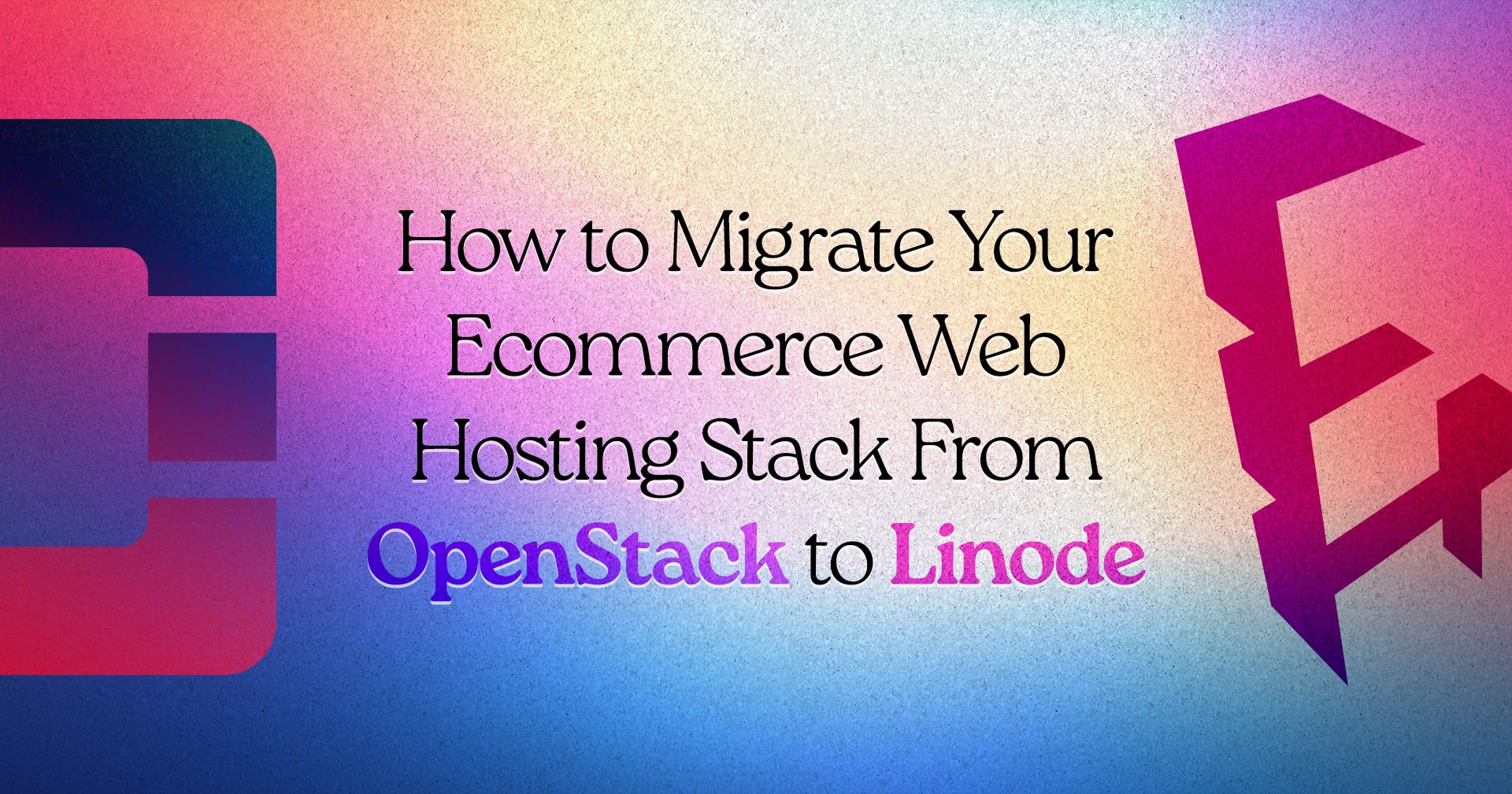

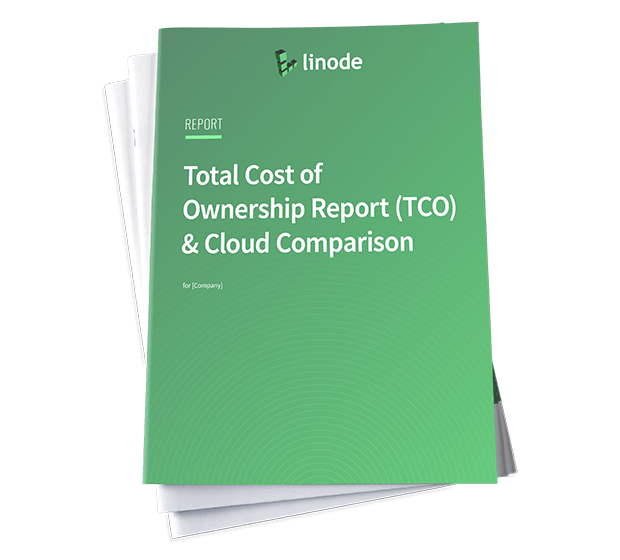


Comments